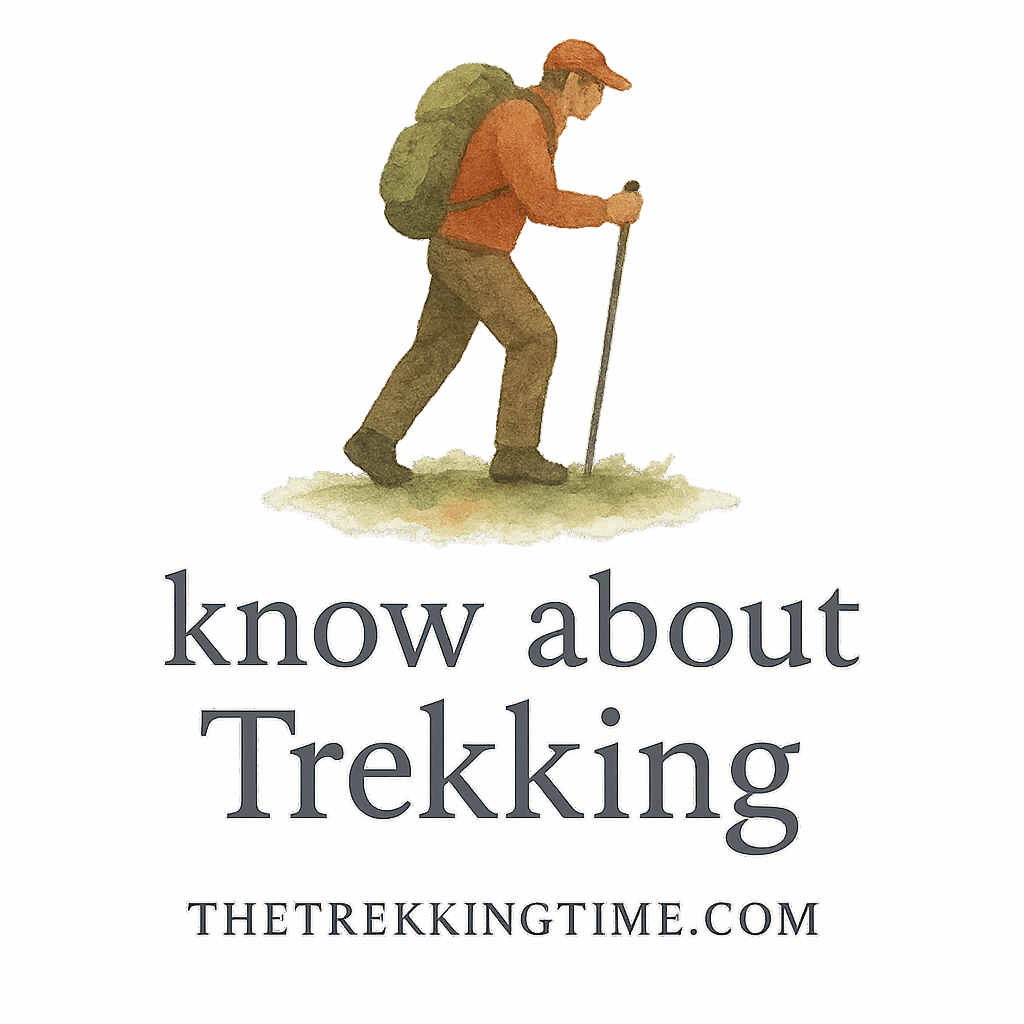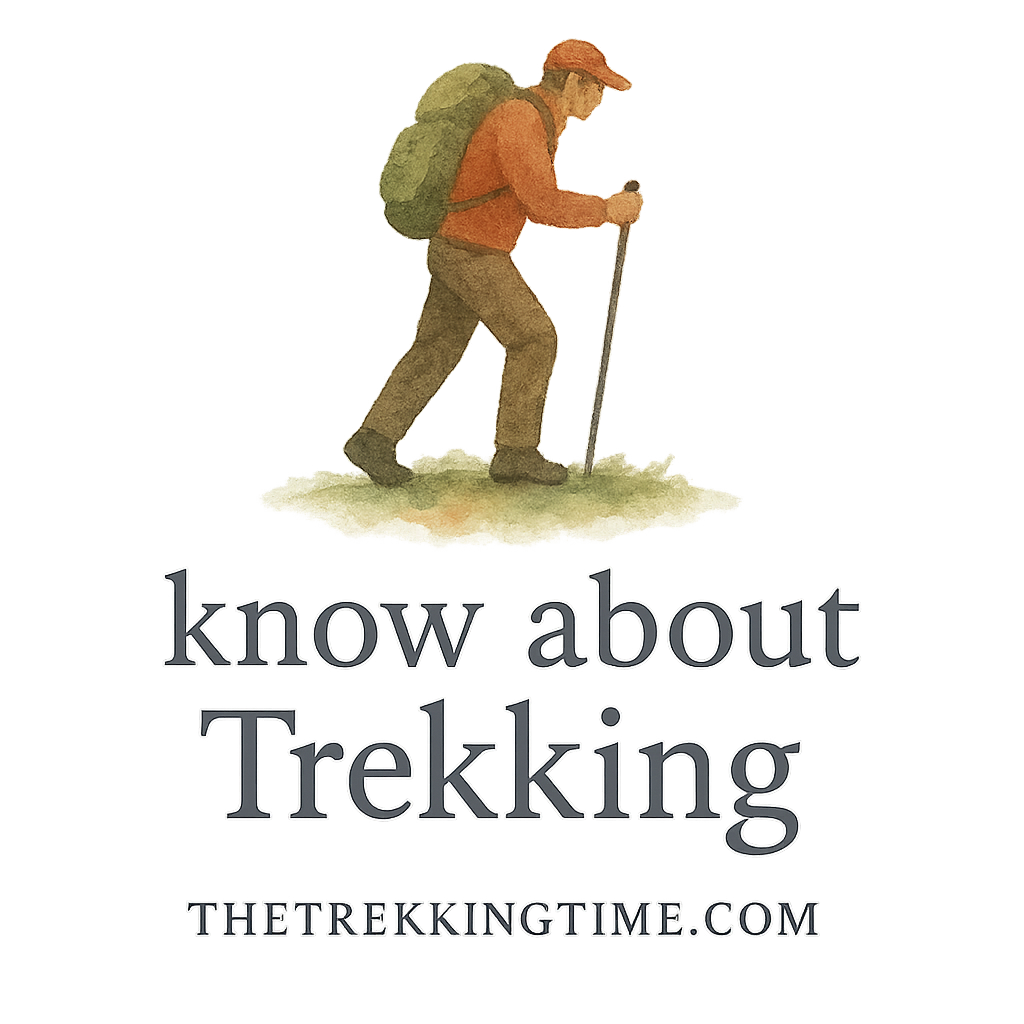Introduction: Why a Pre-Trekking Checklist Matters
Imagine this: you’re halfway up a beautiful trail, the views are mind-blowing, but suddenly—you realize you forgot your rain gear or didn’t train for the altitude. Oops.
That’s where a Pre-Trekking Checklist saves the day. Whether you’re a beginner or a seasoned hiker, having a thorough checklist isn’t just about being prepared—it’s about staying safe and making the most of your adventure.
Let’s dive into the 10 Pre-Trekking Checklist items you should never miss before lacing up your boots and hitting the trail.
1. Research the Trekking Route
Know the Trail Difficulty and Terrain
Not all trails are created equal. Some are gentle forest walks, while others challenge even experienced trekkers with steep climbs and rough terrains. Knowing what you’re getting into is step one.
Use Trusted Sources and Maps
Before heading out, gather information from reliable platforms like The Trekking Time and use apps like AllTrails or Gaia GPS.
Recommended Read: Trekking Destinations
Explore curated routes, destination highlights, and hidden gems.
2. Check Your Physical Fitness Level
Start Early with a Training Plan
Trekking isn’t just a walk in the park. A couple of weeks before your trek, start walking long distances, include stair climbs, and maybe even hike with your loaded backpack.
Assess Altitude Readiness
Altitude sickness is no joke. If your trek is above 2,500m, consider practicing breathing techniques and gradually increase altitude during training.
More Tips: Trekking Fitness Prep
Build strength, stamina, and learn to prep your body for elevation.
3. Get the Right Trekking Gear
Essentials You Can’t Forget
Your gear can make or break your trek. Don’t leave behind your:
- Trekking boots (broken-in, please!)
- Backpack with rain cover
- Lightweight sleeping bag (if needed)
- Hydration system
Layering for Changing Weather
Use the 3-layer system: base layer (moisture-wicking), insulating layer (fleece or down), and outer layer (wind/rain protection).
Gear Guide: Trekking Gear & Packing
Get the ultimate gear list that balances weight and necessity.

4. Pack Smart, Not Heavy
Create a Packing List
Organize your items under categories like clothing, gadgets, food, and toiletries. Use a checklist app or good ol’ pen and paper.
Prioritize Multifunctional Items
Choose gear that serves multiple purposes, like a bandana (sweat rag, face mask, towel) or a buff.
5. Weather and Seasonal Check
Understand the Best Season
Different trekking regions have distinct seasons. For example, the Himalayas are best during spring and autumn.
Check Local Forecasts
Use weather apps and local tourism sites to avoid getting caught in storms or unbearable heat.
6. Health Check-Up & First Aid Kit
Schedule a Doctor Visit
Get a basic health check-up and ensure you’re up to date with necessary vaccinations (especially for remote treks).
Include Basic and Altitude Medications
Your kit should include:
- Bandages & antiseptic
- Pain relievers
- Altitude sickness pills
- Blister plasters
Read More: Trekking & Health
Stay ahead of altitude, fatigue, and infections while trekking.
7. Secure All Necessary Permits
Government Regulations & Fees
Some trails (especially national parks and border zones) require permits. Nepal’s Annapurna Circuit, for example, needs the TIMS and ACAP permits.
Booking in Advance
Avoid last-minute rushes. Many permits require processing time and online forms.
8. Safety and Emergency Preparedness
Share Your Itinerary
Always inform a friend, family member, or your guesthouse host about where you’re going and when you plan to return.
Emergency Contacts & Gear
Carry a whistle, a charged phone or satellite tracker, and know emergency numbers.
Safety Tips: Trekking Safety Tips
Learn to stay secure in harsh conditions or unfamiliar territory.
9. Know Trekking Etiquette
Leave No Trace Principle
Everything you carry in should come back with you. No exceptions.
Respect Locals & Nature
Avoid loud music, be polite to fellow hikers, and respect local customs.
Etiquette Advice: Trekking Etiquette
Learn the do’s and don’ts of trail behavior.
10. Mental Preparation & Mindset
Prepare for Challenges
Trekking can be physically demanding and mentally exhausting. You’ll need more than strong legs—you need a strong mindset too.
Embrace the Journey
Focus on the beauty around you, take it slow, and remember: it’s not a race.
Mental Wellness: Trekking & Mental Health
Discover how trekking builds emotional strength and mental clarity.
Final Thoughts
Trekking isn’t just a physical journey—it’s an emotional, mental, and spiritual one. With this pre-trekking checklist, you’ll have fewer surprises and more joy on the trail. From choosing the right trekking route to maintaining good habits and wellness, preparation is key.
Conclusion
There you have it—your ultimate Pre-Trekking Checklist. Following these 10 essential steps ensures your trek is safe, enjoyable, and memorable. So grab your gear, prepare smart, and hit the trail with confidence!
Need help figuring out where to start? Explore guides and expert insights at The Trekking Time, your go-to source for everything hiking, health, and highland.
FAQs
1. What should be the first thing I do when planning a trek?
Start by researching the trail’s difficulty, weather, and permit requirements.
2. How early should I begin training for a trek?
Ideally, 4–6 weeks before your departure to build stamina and strength.
3. Is it okay to trek solo?
Yes, but only with proper planning, emergency gear, and route knowledge. Group treks are safer for beginners.
4. What should be in a basic trekking first aid kit?
Bandages, antiseptic, altitude sickness pills, painkillers, and any personal medication.
5. Can I trek without permits in some areas?
No—many regions, especially national parks or protected zones, strictly require permits.
6. How can I stay motivated during long treks?
Set short-term goals, take breaks, hydrate often, and soak in the views.
7. Where can I find more trekking tips and resources?
Check out The Trekking Time and related sections like Trekking Basics, Fitness, and Trail Safety.


